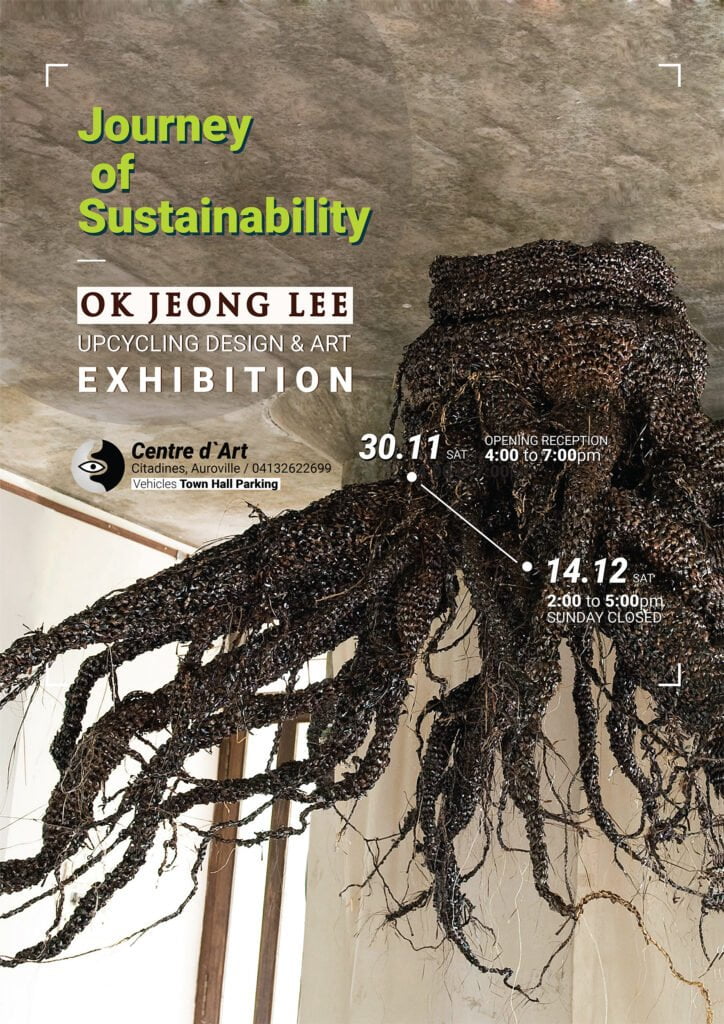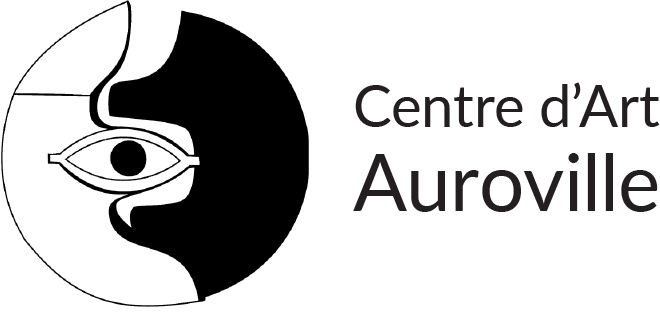By Ok Jeong Lee
30th November to 14th December 2019
Opening on Saturday 30th Nov, 4 – 7pm

On the Bottom of the Ocean, by Dominique Jacques
The term ‘Upcycling’, applied to art, dates back to the mid-90s. It means that the value of an object recuperated by the artist is greater than that of the object before it gets transformed (transformation that does not chemically modify the materials). Upgraded from waste material to a unique artwork, from post-consumer waste to a raw material shaped by a creative mind, the object undergoes a metamorphosis and acquires a new life, a new nobility, a new meaning.
Actually, the Upcycling Art was born in an anonymous form at the beginning of the 20th century, with the birth of the consumer society. Together with the latter, it unfolded into a poisonous symbiosis, like a shadow following all its movements, and we never really understand if it’s an accomplice, a symptom, or a judgement of such society. For it is the role of art and its paradox to tell its own version of the facts, and to deny them when we are told that everything works just fine. It is no coincidence that one of the most significant movements ante litteram of the Upcycling Art, the Arte Povera (the rustic art born in Italy in the ‘60s), stems from the an arrogant wealth spreading in the post-war period. The artists expressing this art movement make use of natural or recycled materials. According to Pistoletto, one of its main representatives, Arte Povera is “a posture opposed to the futuristic fervor and the consumerist clamor, insofar as it emphasizes the saturation of a growth ideal that has reached its maximum”.
The act of creation applied to waste is both a denunciation and a search for transcendence.
Ok Jeong Lee uses these waste materials upstream out of necessity, for they are abundantly available, and restores them downstream in the form of magnificent creatures whose beauty evokes the danger. Her work is a wake-up call, as well as an invitation to project our consciousness onto ways to accomplish the future, based on new parameters.
Starting from magnetic tapes, compact discs, plastic packaging, she materializes before our eyes a world of spells, of zoomorphic and phytomorphic organisms suspended in an aquatic atmosphere.
As if we were walking on the bottom of the ocean, semi submerged shapes fluctuate from the surface above our heads.
The roots of an invisible tree cling to the molecules of air surrounding drifting jellyfish banks, which emanate light from their electric bodies.
In the wake of jellyfish do spin laser fish, swimming tangentially to their trajectories.
Lightning bolts and shadows revolve through the magic lantern of Ok Jeong Lee.
And in this aquarium of synthesis, of which we are the temporary and enchanted hosts, we follow eyes on the wall of the halos forgetting the shadows behind the glass, believing for a moment that maybe, finally, we too have gills, that it is only some light that we are inhaling, not poisoned air.
But if artists are right, if really, as they say, they are visionaries capable of creating worlds, then out there, somewhere beyond the wall that we call reality, a new way of breathing is already possible.
In my world, wastes or things that are no longer wanted are the seeds place of the creation of Art. Growing up in poverty, these materials were the only way to manifest art without being held back by scarcity. These unwanted materials, expired by trend, time & innovations, show the passage we sailed through as human species. These materials shows our ambitions, success and failures of our time. What it has cost us to get here? Art, made with materials that reveals what it costs us to be where we are. These art pieces tells us the story of what we’ve been ignoring and that now is the time to act!
In Korea, the beautiful country where I come from, wearing masks and receiving heavy metal air contamination alert became part of our everyday life. In India, this beautiful country where I live now, the burning of garbage including plastic often makes the air unbreathable. I wonder will we in India also have to wear masks. Climate change and environment degradation isn’t anymore in the far future. It’s happening now and it’s happening fast. Through listening to those stories these art pieces tells, led me to finding my purpose in life. The last 10 years living in India has been a journey of sustainability. And during that journey I asked myself everyday. “What am I actually doing for the environment?” In reflecting the past, I envision the next 10 years with more awareness and responsibility. And this is the question I ask myself, and to you. What can I give back to the earth? What action do I need to take to fulfil my role as a guardian of this planet?
Ok Jeong Lee
